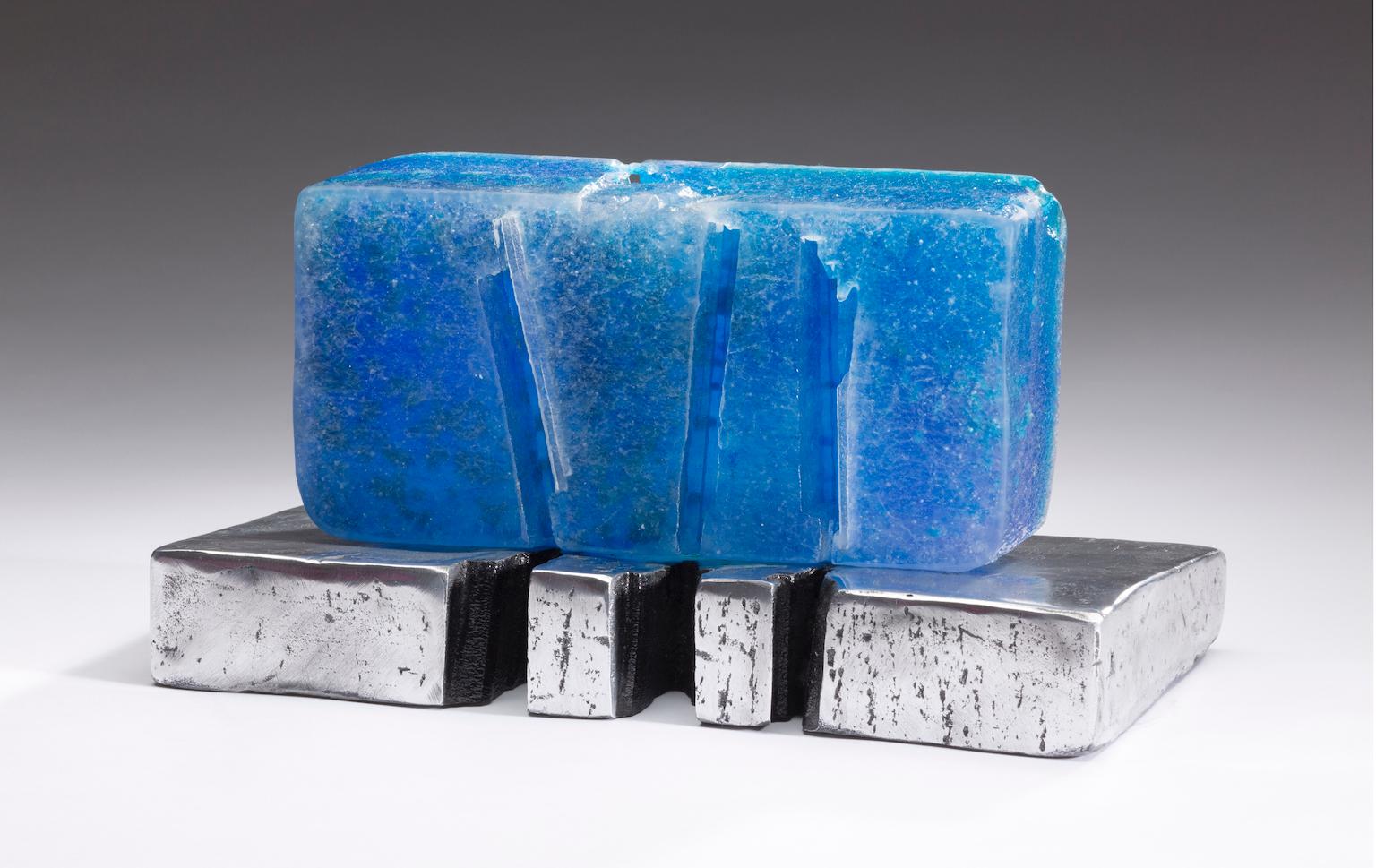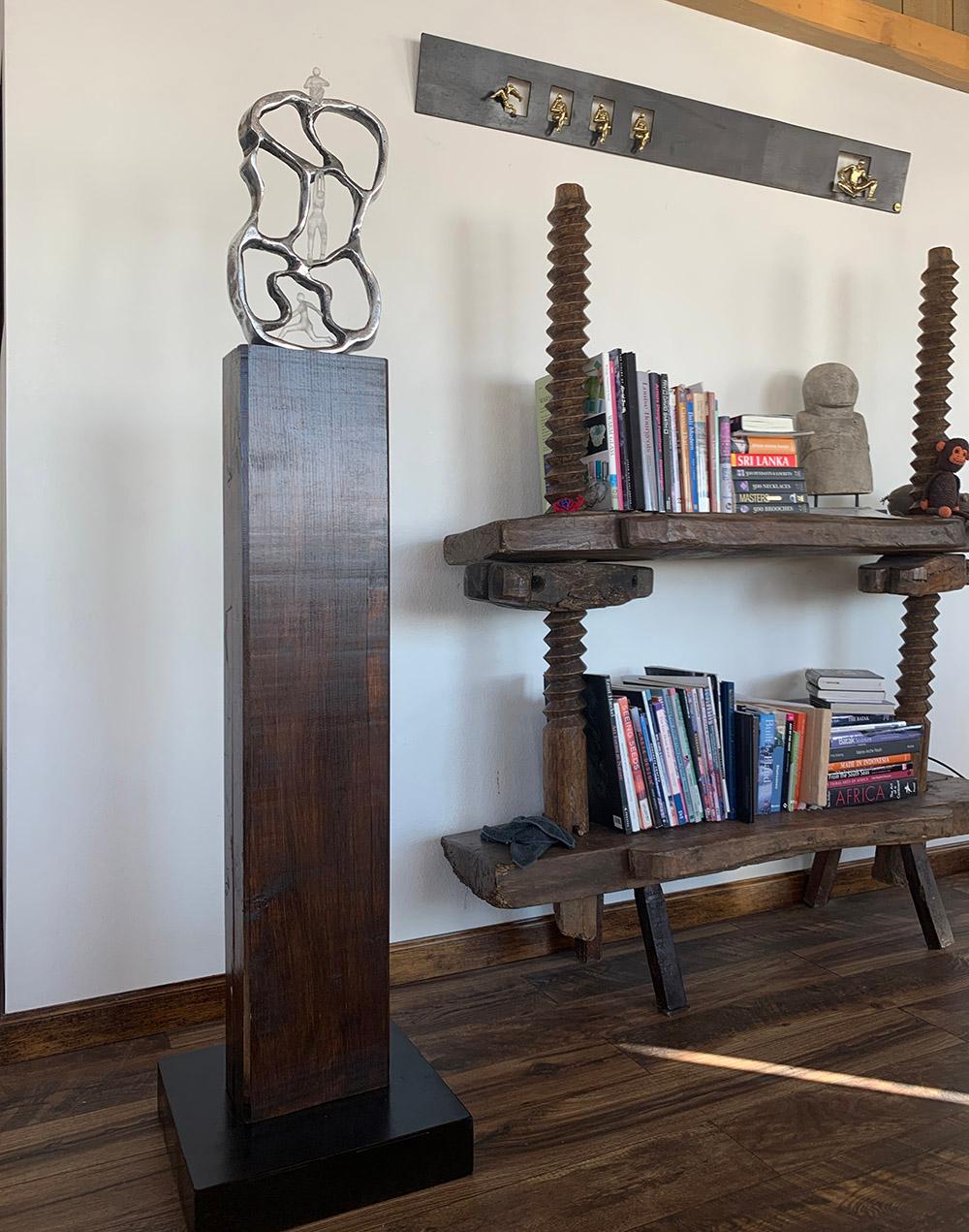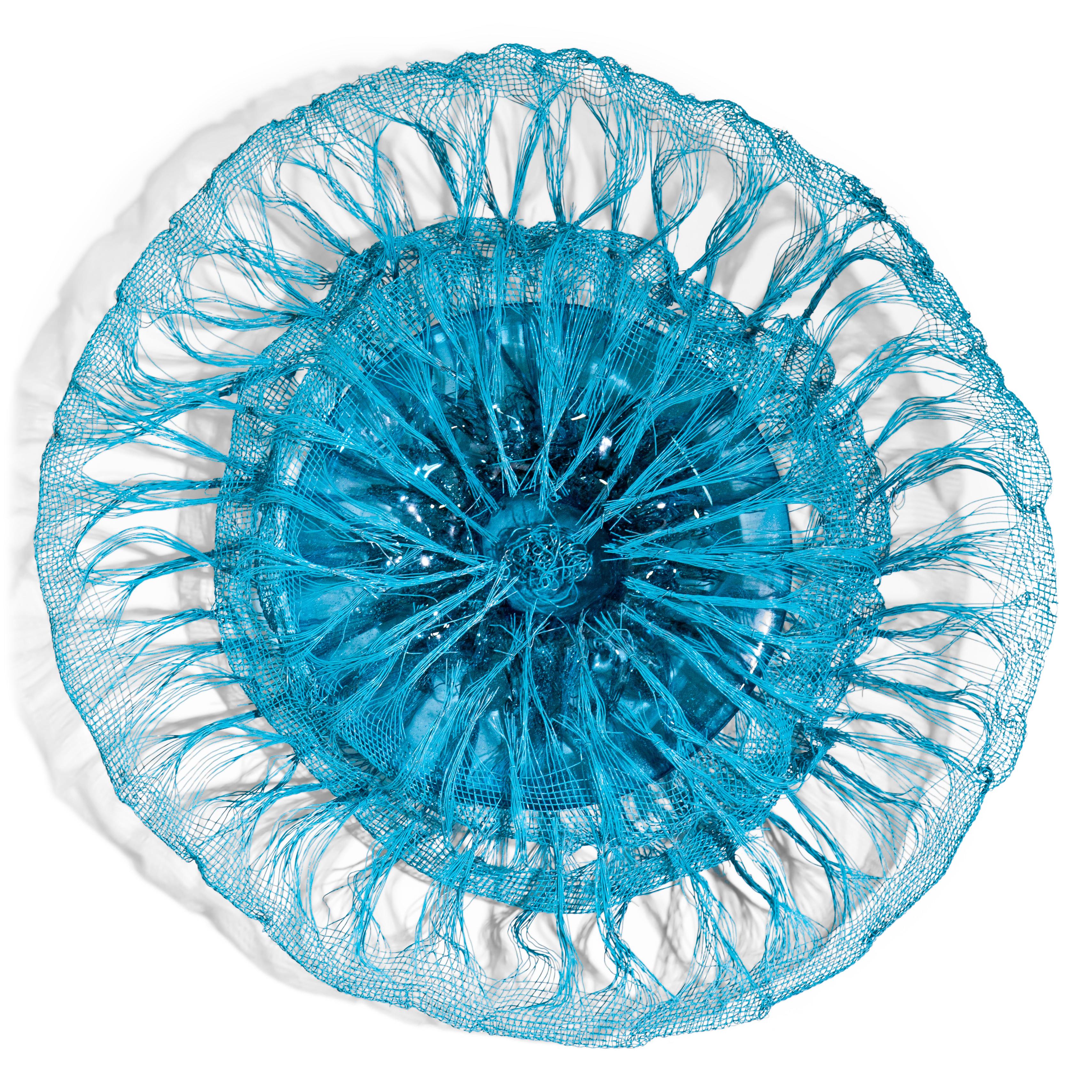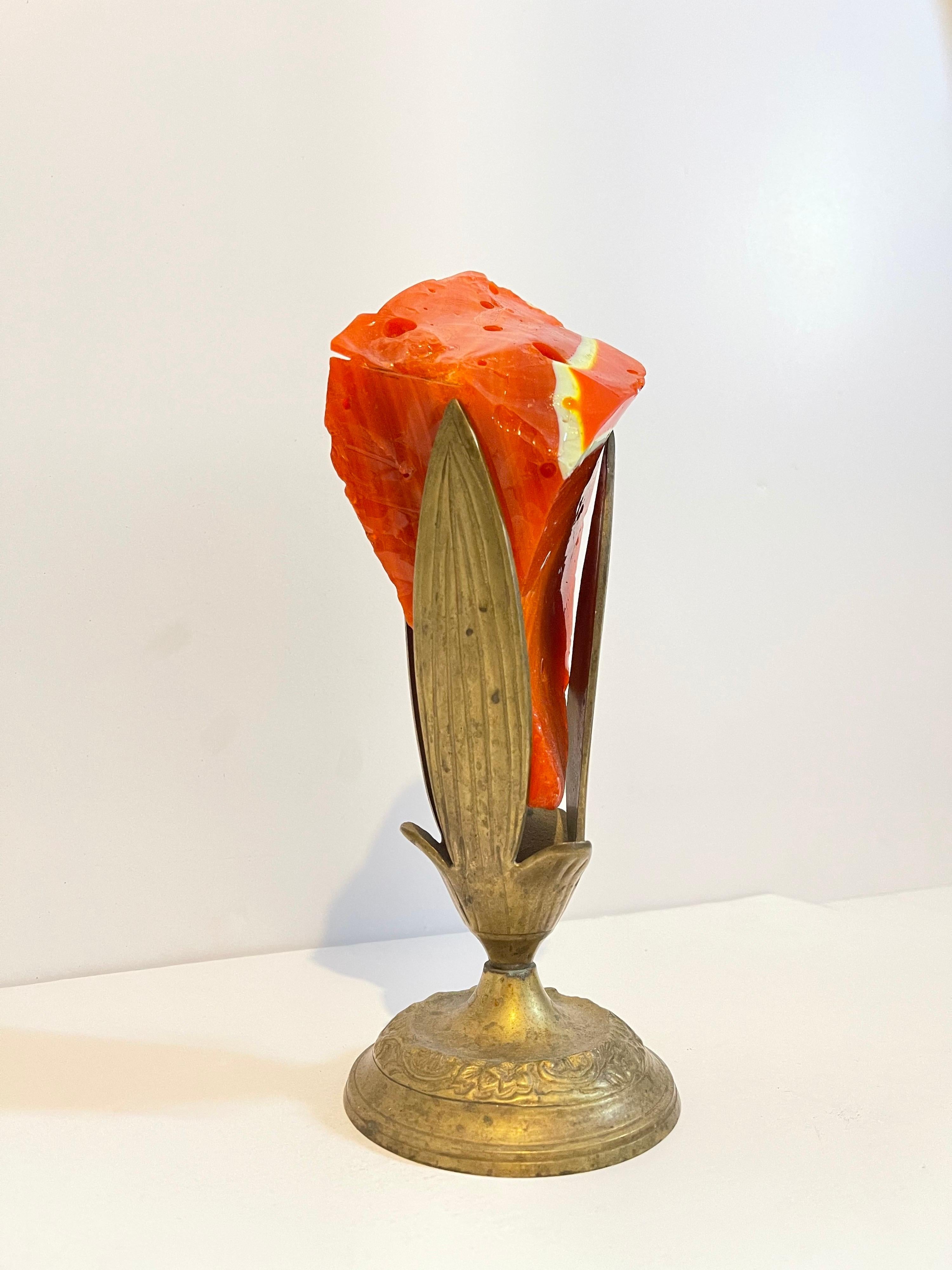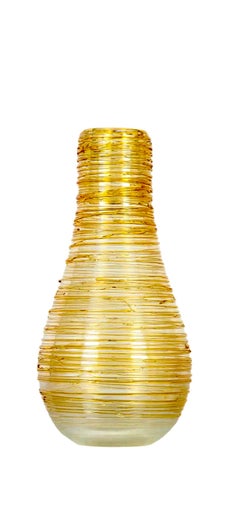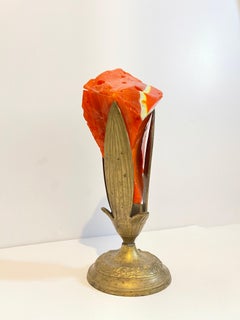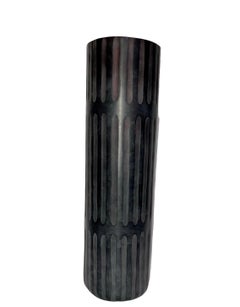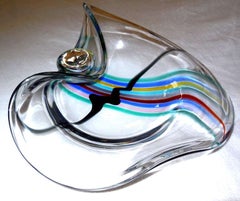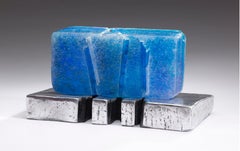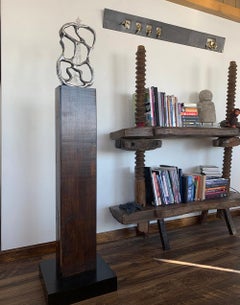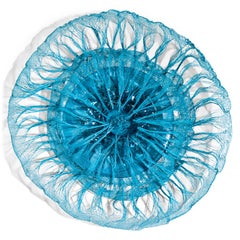Items Similar to Large Murano Glass Abstract Blown Glass Sculpture Gold, Clear Constantini Vase
Want more images or videos?
Request additional images or videos from the seller
1 of 13
Sergio Costantini Large Murano Glass Abstract Blown Glass Sculpture Gold, Clear Constantini Vase
About the Item
Dimensions: 12.5 X 5.25 X 5.25 in
The organic shaped vase showcases an applied light gold colored threaded design enveloping the clear body, around. Hand signed Constantini S. It came from an important estate in the Palm Beach area.
Made in Murano, handmade according to the ancient Murano glass tradition.
Master Sergio Costantini was born in Venice in 1956 and learned the technique of glass processing from the famous Master Glassmakers of Murano A. Barbini, Licio Zanetti, L. Mellara. His works are exhibited globally in the most important museums and art galleries.
Venetian glass (Italian: vetro veneziano) is thought to have been made for over 1,500 years, and production has been concentrated on the Venetian island of Murano since the 13th century. Murano glassmakers created cristallo—which was almost transparent and considered the finest glass in the world. Murano glassmakers also developed a white-colored glass (milk glass called lattimo) that looked like porcelain. They later became Europe's finest makers of mirrors. Murano glassmaking began a revival in the 1920s. Today, Murano and Venice are tourist attractions, and Murano is home to numerous glass factories and a few individual artists' studios. Its Museo del Vetro (Glass Museum) in the Palazzo Giustinian contains displays on the history of glassmaking as well as glass sculpture samples ranging from Egyptian times through the present day.
The Venetian glassmakers of Murano are known for many innovations and refinements to glassmaking. Among them are Murano beads, cristallo, lattimo, chandeliers, and mirrors. Additional refinements or creations are goldstone, multicolored glass (millefiori), and imitation gemstones made of glass.
Aventurine glass, also known as goldstone glass, is translucent brownish with metallic (copper) specks.
Calcedonio is a marbled glass that looked like the semi precious stone chalcedony. This type of glass was created during the 1400s by Angelo Barovier, who is considered Murano's greatest glassmaker. Ercole Barovier, a descendant of Murano's greatest glassmaker Angelo Barovier, won numerous awards during the 1940s and 1950s for his innovations using the murrine technique.
Sommerso is a form of artistic Murano glass that has layers of contrasting colors (typically two), which are formed by dipping colored glass into another molten glass and then blowing the combination into a desired shape. The outermost layer, or casing, is often clear. Sommerso was developed in Murano during the late 1930s. Flavio Poli was known for using this technique, and it was made popular by Seguso Vetri d'Arte and the Mandruzzato family in the 1950s. This process is a popular technique for vases, and is sometimes used for sculptures.
Some of Venice's historical glass factories in Murano remain well known brands today, including De Biasi, Gabbiani, Venini, Salviati, Barovier & Toso, Pauly, Berengo Studio, Seguso, Formia International, Simone Cenedese, Alessandro Mandruzzato, Vetreria Ducale, Estevan Rossetto 1950 and others. The oldest glass factory is Antica Vetreria Fratelli Toso, founded in 1854.
- Creator:Sergio Costantini (1956, Italian)
- Dimensions:Height: 12.5 in (31.75 cm)Width: 5.25 in (13.34 cm)Depth: 5.25 in (13.34 cm)
- Medium:
- Movement & Style:
- Period:
- Condition:minor wear.
- Gallery Location:Surfside, FL
- Reference Number:1stDibs: LU38211834702
About the Seller
4.9
Platinum Seller
Premium sellers with a 4.7+ rating and 24-hour response times
Established in 1995
1stDibs seller since 2014
1,743 sales on 1stDibs
Typical response time: 2 hours
- ShippingRetrieving quote...Shipping from: Surfside, FL
- Return Policy
Authenticity Guarantee
In the unlikely event there’s an issue with an item’s authenticity, contact us within 1 year for a full refund. DetailsMoney-Back Guarantee
If your item is not as described, is damaged in transit, or does not arrive, contact us within 7 days for a full refund. Details24-Hour Cancellation
You have a 24-hour grace period in which to reconsider your purchase, with no questions asked.Vetted Professional Sellers
Our world-class sellers must adhere to strict standards for service and quality, maintaining the integrity of our listings.Price-Match Guarantee
If you find that a seller listed the same item for a lower price elsewhere, we’ll match it.Trusted Global Delivery
Our best-in-class carrier network provides specialized shipping options worldwide, including custom delivery.More From This Seller
View AllLarge Murano Glass Abstract Blown Glass Sculpture Gold, Clear Constantini Vase
Located in Surfside, FL
Dimensions: 15.5 X 7 X 7 in.
The organic shaped vase showcases an applied light gold colored threaded design enveloping the clear body, around. Hand signed Constantini S. It came from an important estate in the Palm Beach area.
Made in Murano, handmade according to the ancient Murano glass tradition.
Master Sergio Costantini was born in Venice in 1956 and learned the technique of glass processing from the famous Master Glassmakers of Murano A. Barbini, Licio Zanetti, L. Mellara. His works are exhibited globally in the most important museums and art galleries.
Venetian glass (Italian: vetro veneziano) is thought to have been made for over 1,500 years, and production has been concentrated on the Venetian island of Murano since the 13th century. Murano glassmakers created cristallo—which was almost transparent and considered the finest glass in the world. Murano glassmakers also developed a white-colored glass (milk glass called lattimo) that looked like porcelain. They later became Europe's finest makers of mirrors. Murano glassmaking began a revival in the 1920s. Today, Murano and Venice are tourist attractions, and Murano is home to numerous glass factories and a few individual artists' studios. Its Museo del Vetro (Glass Museum) in the Palazzo Giustinian contains displays on the history of glassmaking as well as glass sculpture samples ranging from Egyptian times through the present day.
The Venetian glassmakers of Murano are known for many innovations and refinements to glassmaking. Among them are Murano beads, cristallo, lattimo, chandeliers, and mirrors. Additional refinements or creations are goldstone, multicolored glass (millefiori), and imitation gemstones made of glass.
Aventurine glass, also known as goldstone glass, is translucent brownish with metallic (copper) specks.
Calcedonio is a marbled glass that looked like the semi precious stone chalcedony. This type of glass was created during the 1400s by Angelo Barovier, who is considered Murano's greatest glassmaker. Ercole Barovier, a descendant of Murano's greatest glassmaker Angelo Barovier, won numerous awards during the 1940s and 1950s for his innovations using the murrine technique.
Sommerso is a form of artistic Murano glass that has layers of contrasting colors (typically two), which are formed by dipping colored glass into another molten glass and then blowing the combination into a desired shape. The outermost layer, or casing, is often clear. Sommerso was developed in Murano during the late 1930s. Flavio Poli was known for using this technique, and it was made popular by Seguso Vetri d'Arte and the Mandruzzato family in the 1950s. This process is a popular technique for vases, and is sometimes used for sculptures.
Some of Venice's historical glass factories in Murano remain well known brands today, including De Biasi...
Category
20th Century Abstract Abstract Sculptures
Materials
Glass
Early Murano Glass Free Form Abstract Blown, Cut, Glass Sculpture in Bronze Vase
Located in Surfside, FL
This piece appears unsigned and unmarked. It came from an important estate in the Palm Beach area.
It is an abstract flame or torch in a bronze vase.
Venetian glass (Italian: vetro ...
Category
1940s Abstract Abstract Sculptures
Materials
Bronze
Large Murano Abstract Hand Blown Arcade Glass Sculpture Marcello Panza Vase
Located in Surfside, FL
Marcello Panza for Arcade Vase (this is for 1 of a pair I have, I am selling them separately). This has an African or Aboriginal tribal pattern to it.
...
Category
20th Century Abstract Abstract Sculptures
Materials
Glass
Huge Seguso Murano Glass Centerpiece Sculpture
By Livio Seguso
Located in Surfside, FL
A huge centerpiece good-quality Seguso Murano (probably 1970s or 1980s, Memphis Milano era) elliptical-form clear glass sculptural bowl with striated ...
Category
20th Century Abstract Abstract Sculptures
Materials
Glass
Abstract Mixed Media Biomorphism Wall Sculpture. Miami Artist Carol K Brown
By Carol K. Brown
Located in Surfside, FL
This is a wall sculpture of a protruding abstract organic appendage form. They are in the form of Surrealist fantastic flora and fauna. It is from her 1990-1995 series called tondos & squares. This is a mixed media sculpture composed of plastic/resin (it looks like blackened steel), rubber and metal wire. Hand signed verso. This sale is for one. I have 5 of them available, they make a great wall installation grouping.
Carol K. Brown is an American woman artist born in Memphis, Tennessee and lives and works in New York and Miami Beach, Florida. Brown works with sculpture, painting, photography, video, digital and installation art. She has received the State of Florida Fine Arts Fellowship (1983), Southeastern Center for Contemporary Art Fellowship (1986), and two National Endowment for the Arts Fellowship (1984 and 1986). Her work is owned by the Perez Art Museum Miami, the Museum of Contemporary Art San Diego, the Memphis Brooks Museum of Art, and the Herbert F. Johnson Museum of Art at Cornell University. She is a professor of sculpture at the New World School of the Arts in Miami. She was included in the show Making Art in Miami along with Jose Bedia; Consuelo Castaneda; Quisqueya Henriquez...
Category
1990s Abstract Abstract Sculptures
Materials
Metal
Abstract Mixed Media Biomorphism Wall Sculpture. Miami Artist Carol K Brown
By Carol K. Brown
Located in Surfside, FL
This is a wall sculpture of a protruding abstract organic appendage form. They are in the form of Surrealist fantastic flora and fauna. It is from her 1990-1995 series called tondos & squares. This is a mixed media sculpture composed of plastic/resin (it looks like blackened steel), rubber and metal wire. Hand signed verso. This sale is for one. I have 5 of them available, they make a great wall installation grouping.
Carol K. Brown is an American woman artist born in Memphis, Tennessee and lives and works in New York and Miami Beach, Florida. Brown works with sculpture, painting, photography, video, digital and installation art. She has received the State of Florida Fine Arts Fellowship (1983), Southeastern Center for Contemporary Art Fellowship (1986), and two National Endowment for the Arts Fellowship (1984 and 1986). Her work is owned by the Perez Art Museum Miami, the Museum of Contemporary Art San Diego, the Memphis Brooks Museum of Art, and the Herbert F. Johnson Museum of Art at Cornell University. She is a professor of sculpture at the New World School of the Arts in Miami. She was included in the show Making Art in Miami along with Jose Bedia; Consuelo Castaneda; Quisqueya Henriquez...
Category
1990s Abstract Abstract Sculptures
Materials
Metal
You May Also Like
Tabletop Blue Glass Sculpture, Silver coloured base, by J. Baker, D. Marshall
By David Marshall
Located in Benahavis, ES
The Sculpture titled " Petra " is created with kiln casted glass and sand cast aluminum. It comes in two pieces (Blue Glass piece which sits atop the Aluminium (silver coloured) me...
Category
2010s Abstract Abstract Sculptures
Materials
Metal
"Social Isolation" Glass Abstract Sculpture Figures Aluminium Wood Steel
By David Marshall
Located in Benahavis, ES
This contemporary Sculpture " Social Isolation " features a stunning combination of cast aluminum and glass figures, was created by DM and Jennifer Baker, from lost wax cast glass, ...
Category
2010s Abstract Abstract Sculptures
Materials
Metal, Iron
Ron Aloni, Blown Glass & Wire Wall Object (blue) Israel 2019, Abstract Sculpture
Located in Greding, DE
Large wall object made of hand-blown glass and wire in light blue. Despite the hard material, Aloni's objects possess an extraordinary soft quality, which is the optical attraction of the work.
Ron...
Category
2010s Abstract Mixed Media
Materials
Wire
Circle 11 - Dichromatic Glass Sculptural Artwork
By Chris Wood
Located in Los Angeles, CA
Chris Wood’s "Circle 11" is a dichroic glass light sculpture that captivates with its dynamic interplay of reflection and refraction. This contemporary geometric artwork features an intricate spiral of iridescent glass pieces, which shift in hue depending on the light and viewing angle. The piece harnesses natural and artificial light to create an evolving spectrum of colors, making it ideal for collectors of optical art, kinetic sculpture, and modern light installations. The rhythmic arrangement of elements invites viewers into a meditative experience, blending minimalism with an ethereal sense of movement.
Wood uses a range of high and low-tech optical materials to harness patterns of light that suggest ephemeral glimpses of moments in the natural world. Her minimalist sculptures are simple arrangements creating kinetic patterns in response to the environments in which they are placed.
The artist often uses a material called dichroic (meaning “two color”) glass, which was developed by NASA in the 1950's. Dichroic glass has a special optical coating meant to reflect certain wavelengths of light while letting others through, creating beautiful projections of light and color depending on the environment in which the artwork is placed.
This 20 inch square sculptural artwork...
Category
21st Century and Contemporary Abstract Mixed Media
Materials
Metal
Scabious - Minimalist Light Reflecting Wall Sculpture Colorful Kinetic Patterns
By Chris Wood
Located in Los Angeles, CA
Chris Wood’s "Scabious" is a dichroic glass light sculpture that radiates a mesmerizing interplay of color, light, and movement. The circular arrangement of glass elements reflects a...
Category
21st Century and Contemporary Abstract Mixed Media
Materials
Metal
Gloaming - Large Dichromatic Glass Sculptural Wall Artwork on White Metal
By Chris Wood
Located in Los Angeles, CA
Chris Wood’s "Gloaming" is a captivating kinetic light sculpture that plays with transparency, reflection, and the fluidity of color. Using precisely arranged dichroic glass elements...
Category
21st Century and Contemporary Abstract Mixed Media
Materials
Metal
Recently Viewed
View AllMore Ways To Browse
Large Gold Sculpture
Glass Lighted Sculptures
Large Light Sculpture
Large White Sculpture
Large Glass Sculptures
Glass Blown Sculpture
Clear Glass Sculpture
Blown Art Glass Large
Large Organic Sculpture
Large Stone Art Sculptures
Italian Glass Sculpture Artists
Large Handmade Sculpture
Threaded Art Glass
Blow Art Glass
Venetian Sculpture
Orange Glass Sculpture
Large Abstract Vase
Murano Glass Sculpture Signed

